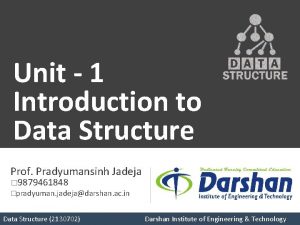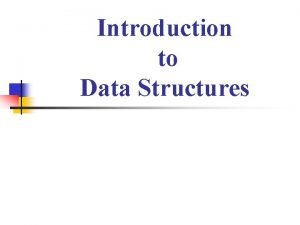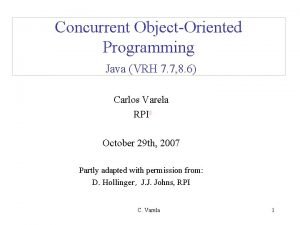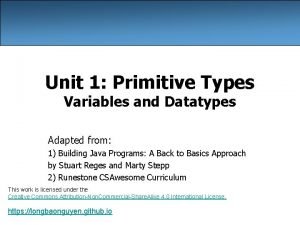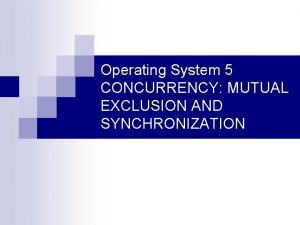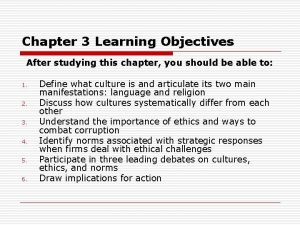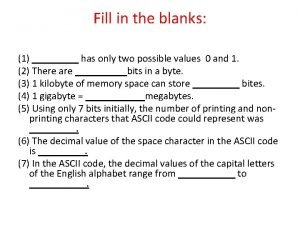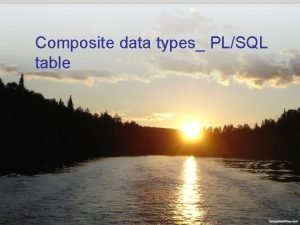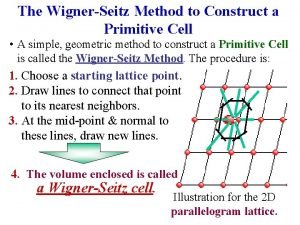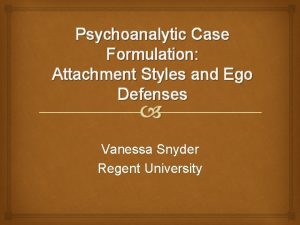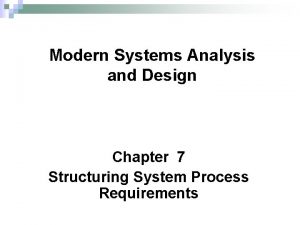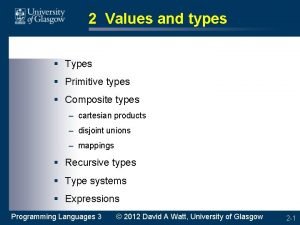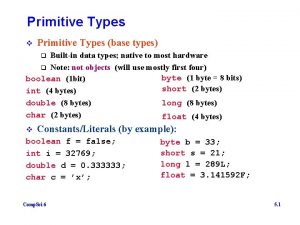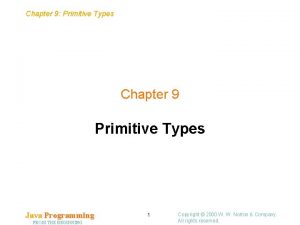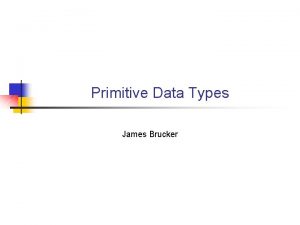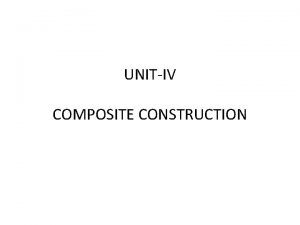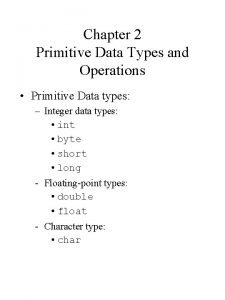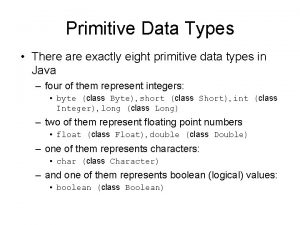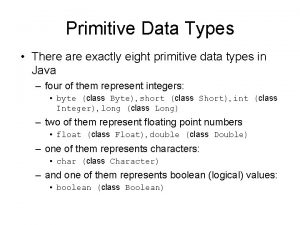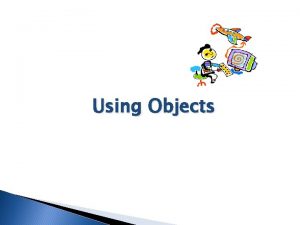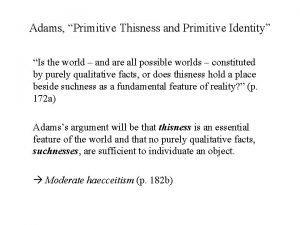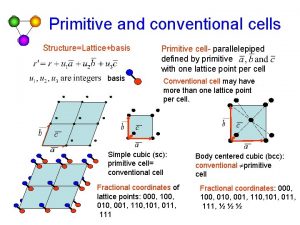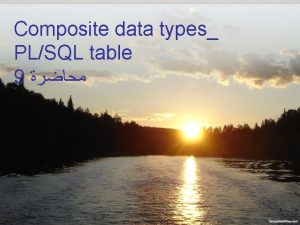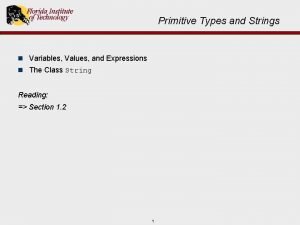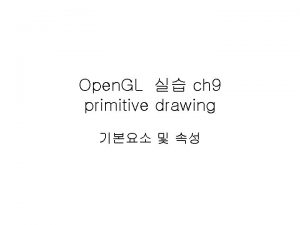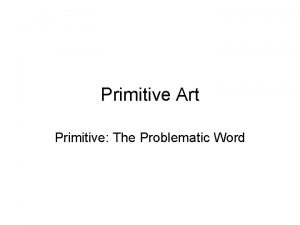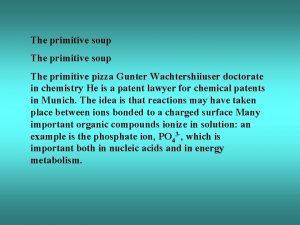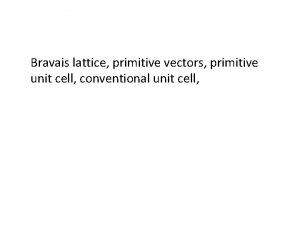Values and Types Types of values Primitive composite























- Slides: 23

Values and Types § Types of values. § Primitive, composite, recursive types. § Type systems: static vs dynamic typing, type completeness. § Expressions • Functions • Conditional expressions • Arrays 2 -1 § Implementation notes.

What is the difference between expression and statement in programming? § A statement is a complete line of code that performs some action § An expression is any section of the code that evaluates to a value § If you can print it, or assign it to a variable, it’s an expression. If you can’t, it’s a statement! § How about print in Python 2 vs Python 3? 2 -2

Statement vs Expressions in Statements: Python import os assert True pass del x try: raise Exception() except: pass with open(‘/dev/null’) as fd: pass Expressions Values are expressions print(10+2) print(‘a’) Function calls are expressions print(10)) List comprehensions are expressions Print([x*2 for x in range(2)]) 2 -3

Function calls § An operator may be thought of as denoting a function. § Applying a unary operator Å to its operand is essentially a function call with one argument: Å E is essentially equivalent to Å(E) § Applying a binary operator Ä to its operands is essentially a function call with two arguments: E 1 Ä E 2 is essentially equivalent to Ä(E 1, E 2) § Thus a conventional arithmetic expression is essentially equivalent to a composition of function calls: a * b + c / d is essentially equivalent to +(*(a, b), /(c, d)) => infix notation => prefix notation 2 -4

Conditional expressions chooses one of its subexpressions to evaluate, depending on a condition. § An if-expression chooses from two subexpressions, using a boolean condition. § A case-expression chooses from several subexpressions 2 -5

Example: Java if-expressions § Java if-expression: x>y ? x : y § Conditional expressions tend to be more elegant than conditional commands. Compare: int max 1 (int x, int y) { return (x>y ? x : y); } int max 2 (int x, int y) { if (x>y) return x; else return y; } 2 -6

Example: Haskell if- and case-expressions § Haskell if-expression: if x>y then x else y § Haskell case-expression: case m of feb -> if is. Leap y then 29 else 28 apr -> 30 jun -> 30 sep -> 30 nov -> 30 _ -> 31 2 -7

Iterative expressions § An iterative expression • performs a computation over a series of values (typically the components of an array or list), yielding some result. § Iterative expressions are uncommon • but they are supported by Perl by grep 2 -8

Example: Perl iterative expressions via grep #!/usr/bin/perl use strict; use warnings; my %data = ("A" => 0, "B" => "yes", "C" => 0 ); my @arrkeys = grep { $data{$_} } keys %data; § keys %data returns a list of characters (“A”, ”B”, ”C”) § { $data{$_} } runs once for each character , and returns (0, ”yes”, 0) § grep returns only the values from the list on the right-hand side for which the expression in braces evaluates to a true value. 2 -9

Implementation Details: Representation of Cartesian products § Tuples, records, and structures are represented by juxtaposing the components in a fixed order. § Example (C++): struct Date{ int y; Month m; int d; y 2000 m jan d 1 2004 dec 25 }; § Implementation of component selection: • Let r be a record or structure. • Each component r. f has a fixed offset (determined by the compiler) relative to the base address of r. 2 -10

Representation of arrays (1) § The values of an array type are represented by juxtaposing the components in ascending order of indices. § Example (C++): typedef float Vector[3]; 1 2 3 3. 0 4. 0 0. 0 1. 0 0. 5 2 -11

Representation of arrays (2) § Implementation of array indexing: • Let a be an array with index range {l, …, u}. • Assume that each component occupies s bytes (determined by the compiler). • Then a(i) has offset s(i–l) bytes relative to the base address of a. (In C and Java l = 0, so this simplifies to si bytes. ) • The offset computation must be done at run-time (since the value of i is not known until run-time). • A range check must also be done at run-time, to ensure that l i u. 2 -12

Representation of disjoint unions (1) § Each value of a disjoint-union type is represented by juxtaposing a tag with one of the possible variants. The type (and therefore representation) of the variant depends on the current value of the tag. § Example (Haskell): data Number = Exact Int | Inexact Float tag Exact variant 2 tag Inexact variant 3. 1416 2 -13

Representation of disjoint unions (2) § Example (C++): typedef enum { exact, inexact } Accuracy ; typedef union Number{ int ival; float rval; }Number; typedef struct Data. Node { Accuracy acc; Number rval; }Data. Node; acc exact ival 2 acc inexact rval 3. 1416 2 -14

Representation of objects (simplified) § Example (Java): class Point { private float x, y; … // methods } class Circle extends Point { private float r; … // methods } class Rectangle extends Point { private float w, h; … // methods } Point tag Circle tag Rect. tag 1. 5 x 2. 0 y 3. 0 w 4. 0 h 0. 0 x 0. 0 y 5. 0 r 1. 0 x 2. 0 y 2 -15

Representation of disjoint unions (3) § Implementation of tag test and projection: • Let u be a disjoint-union value/object. • The tag of u has an offset of 0 relative to the base of u. • Each variant of u has a fixed offset (determined by the compiler) relative to the base of u. 2 -16

Variables and Storage ‘‘Once a programmer has understood the use of variables, he has understood the essence of programming. ’’ by Edsger Dijkstra 3 -17

Variables and Storage § A simple storage model. § Simple and composite variables. § Copy semantics vs reference semantics. § Lifetime. § Pointers. § Commands. § Expressions with side effects. § Implementation notes. 3 -18

An abstract model of storage (1) § In functional and logic PLs, a “variable” stands for a fixed but unknown value. § In imperative and OO PLs, a variable is a container for a value, which may be inspected and updated as often as desired. § Such a variable can be used to model a real-world object whose state changes over time. 3 -19

An abstract model of storage (2) § To understand such variables, assume a simple abstract model of storage: • A store is a collection of storage cells. Each storage cell has a unique address. • Each storage cell is either allocated or unallocated. • Each allocated storage cell contains either a simple value or undefined. unallocated cells 7 true 3. 14 allocated cells ? undefined ‘X’ 3 -20

Variables and Storage § A simple storage model. § Simple and composite variables. § Copy semantics vs reference semantics. § Lifetime. § Pointers. 3 -21

Simple vs composite variables § A simple value is one that can be stored in a single storage cell (typically a primitive value or a pointer). § A simple variable occupies a single allocated storage cell. § A composite variable occupies a group of allocated storage cells. 3 -22

Simple variables § When a simple variable is declared, a storage cell is allocated for it. § Assignment to the simple variable updates that storage cell. § At the end of the code block, that storage cell is deallocated. § Animation (C++): If (1 == 1 ){ int n; n 10? n = 0; n = n+1; } 3 -23
 Unit 1 introduction
Unit 1 introduction What is data structure
What is data structure Composite vs non composite
Composite vs non composite Human values definition
Human values definition Primitive vs reference types java
Primitive vs reference types java Unit 1 primitive types
Unit 1 primitive types Machiavellian personality
Machiavellian personality Instrumental values
Instrumental values Primitive root in cryptography and network security
Primitive root in cryptography and network security Semaphores provide a primitive yet powerful and flexible
Semaphores provide a primitive yet powerful and flexible Greek mythology study guide
Greek mythology study guide Western vs eastern values
Western vs eastern values A bit can have two possible values. what value are those?
A bit can have two possible values. what value are those? Composite data types in pl sql
Composite data types in pl sql What is wigner seitz primitive cell
What is wigner seitz primitive cell Splitting defense mechanism example
Splitting defense mechanism example Positive support reflex
Positive support reflex Primitive political socialization
Primitive political socialization Floor of primitive pharynx
Floor of primitive pharynx Physical education in primitive era
Physical education in primitive era Dfd chapter 7
Dfd chapter 7 Baby reflexes chart
Baby reflexes chart Primitive streak is formed from
Primitive streak is formed from Types of film genre
Types of film genre
